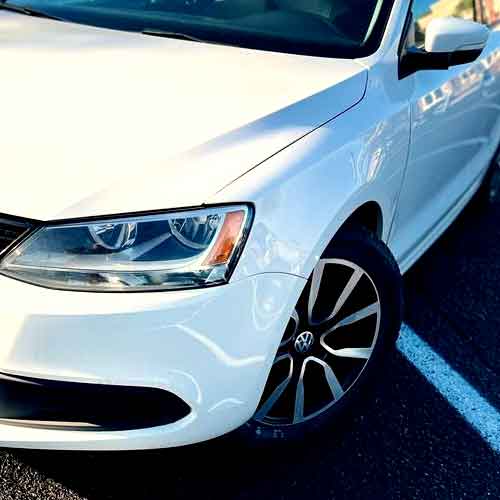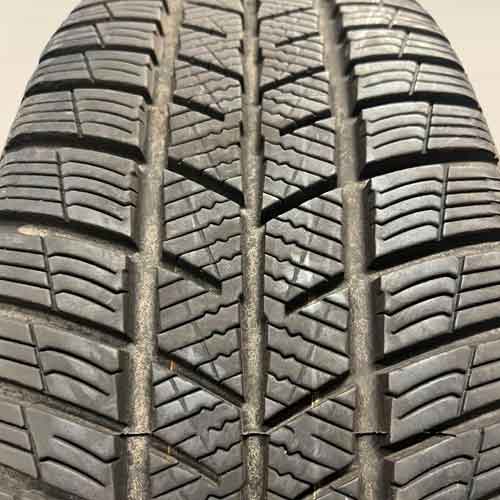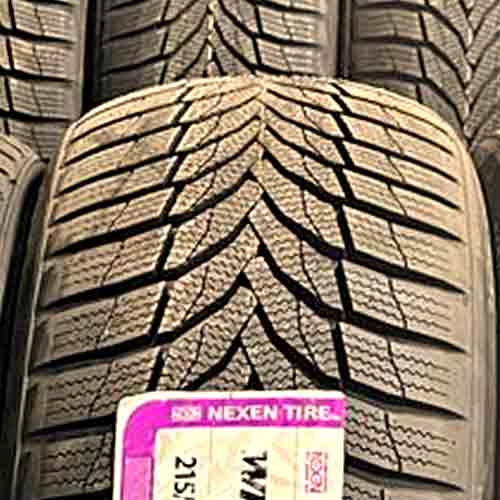The battlefield is set as Barum Polaris 5, acclaimed for its innovative ice-grip technology, competes against Nexen Winguard Sport 2, known for its exceptional slush performance. Let’s find out who takes the top spot!

Table of Contents
Key Takeaway
The Nexen Winterguard Sport 2 takes the lead when it comes to:
- Dominating icy surface performance with superior braking, acceleration, and handling due to a higher number of biters and varied groove notches.
- Offering better vibration dampening and shock absorption for a smoother ride thanks to its softer tread compound and greater tread depth.
- Outperforming in wet traction, both in terms of grip and hydroplaning resistance, with its aggressive siping pattern, V-shaped lugs, and greater tread depth.
On the other side, the Barum Polaris 5:
- Delivers a superior handling experience in dry conditions, benefiting from its stiffer and lighter rubber.
- Provides a quieter ride due to its pitch-producing tread which neutralizes noise from air particle collisions.
- Excels in soft snow conditions, utilizing open biters, chamfered edges, and interlocking grooves to gather snow effectively for better grip.
Sizes Info
| Feature | Nexen WinGuard Sport 2 | Barum Polaris 5 |
|---|---|---|
| Sizes (inches) | 15 to 20 | 13 to 19 |
| Total Sizes | Not specified | 74 |
| Speed Ratings | H, V | T, H, V |
| Load Ratings | SL, XL | SL, XL |
| Tread Depth | 10.5/32″ | 9 to 10/32″ |
| Weight (lbs) | 15 to 30 | 15 to 26 |
| Tread Warranty | None | None |
Dry Performance
The proficiency of a tire’s dry grip is measured by the volume of the rubber that comes into contact with the surface. This is primarily determined by two key components: the directional grip and lateral traction.
Allow us to delve into each of these factors individually.
Directional Grip
The central tread area plays a significant role in the effectiveness of directional grip as it dictates the amount of rubber-to-road contact.
Now here both tires have similar results, as seen by their braking effectiveness. That’s because they both have different features contributing to that.
In case of Barum Polaris 5, you although get more voids in the middle, reducing its performance.

The tire still does okay, thanks to its lighter weight.
With that, there’s less momentum force, allowing the tire for easier braking in comparison. And that’s improtant here, because straight-line grip is calculated by the tire’s braking.
Moreover, given that this central area bears the majority of the load when a tire rolls straight, the tire coming with slanted notches further add to that grip.
In contrast, the Winterguard Sport 2, despite showcasing a nearly continuous running layer, and more streamlined design of its counterpart, should technically take the lead, but its overall performance is similar to its counterpart, due to it’s greater structural weight.
So both tires end up getting equal scores here.
Handling
Handling largely depends on the tire’s shoulder regions and overall weight. While the central lugs carry the burden during directional movement, inertia forces the weight towards the shoulders during cornering. The ability of these shoulder lugs to engage with the surface significantly impacts the handling performance.
Here, the Barum Polaris 5, although offers similar shoulder-to-road contact area, in comparison, still delivers a superior handling experience, with it’s stiffer rubber, and lighter rubber.
On the other hand, the Nexen Winterguard Sport 2, featuring wider grooves, greater tread depth, and also has a heavier structure.

This increased weight results in greater lug flex, leading to reduced steering feedback.
I mean, there’s an imbalance between it’s understeering and oversteering.
And winder grooves and tread depth add to that (lug bending).
Basically with more voids, its weight is less distributed among lugs, and greater tread depth means, lugs are thicker, so you get more deformity of its tread.
Moreover, it’s softer compound isn’t helping this process either.
That’s why even though both tires offer similar lateral grip, the Winguard lacks with its lagging steering responsiveness.
Ice Traction
The Nexen Winguard Sport 2 undoubtedly dominates on icy surfaces, significantly outperforming its counterpart in all aspects including braking, acceleration, and handling.
The reason for this superior performance lies in the higher number of biters present on the tire.
Basically both tires offer similar acceleration and braking, but the Winguard takes the lead in ice handling.
On the other hand, the Barum, with its sightly larger tread voids and lesser number of notches, simply can’t grip the slippery ice as efficiently.
It lacks complex features like dual and multi-angled siping, which are indispensable for tackling compacted snow and icy terrains.
Whereas its counterpart offers a higher count of effective biters, per square inch of tread (one way to explain it).
It features a more varied array of groove notches and snow vices, oriented in both lateral directions, along with a generous supply of dual-patterned siping. Together, these provide enhanced overall gripping efficacy on icy surfaces.
So on icy terrains, Nexen has the upper hand.
Comfort Levels
Ride comfort is typically gauged by two key elements: the noise level and the tire’s ability to absorb road shocks.
Let’s begin by analyzing the noise component.
Simply put, noise generation is a consequence of air particles colliding with the tread’s walls. Thus, a larger tread gap generally translates to a noisier ride.
With this in mind, the Barum Polaris 5, although does not feature compact enough tread gaps, it still offers a more superior ride in terms of noise reduction, all thanks to its pitch producing tread. Let me explain.
So with with this, there is a slight geometric variation in the tread blocks and that results in air particles generating a variety of tones that effectively neutralize each other.
However, the Nexen Winguard Sport 2 outperforms in the area of vibration dampening, due to its comparatively softer tread compound. This feature grants it superior shock absorption capabilities, promising a smoother and more comfortable ride.
Moreover, the tire’s greater tread depth is also providing this tire with a lot of help. This is because more tread depth means more rubber between you and the road, effectively dampening road shocks.
So overall, both tires are great when it comes to comfort, though Polaris is better with noise, and WinGuard with bumps.
Snow Traction
In conditions of soft snow, the Barum Polaris 5 stands out as the clear winner.
The tire, showcasing a more open biters, with chamfered edges and interlocking grooves, is able to gather snow effectively, providing better grip.
The importance of snow gathering is grounded in the fact that snow sticks better to snow than it does to rubber.
The Winterguard Sport 2, with its slightly narrower slits, facilitates less snow-to-snow contact, so it’s not allowing its lug voids to trap soft snow particles as effectively, within their interconnected grooves and snow vices.
Whereas the Polaris, with its pronounced directional pattern aids in paddling, scooping the snow backwards, thereby generating superior forward momentum.
So overall, this ones a win for Barum.
Wet Traction
Wet traction is primarily governed by two components: the tread design and the type of rubber compound used in the tire’s construction. These factors essentially determine the tire’s grip on wet surfaces and its resistance to hydroplaning.
Let’s explore each in turn.
Wet Grip
Despite both tires possessing substantial siping, the Winterguard Sport 2 slightly outperforms in this domain. It incorporates a more aggressive siping pattern that combines linear and interlocking slits.
Additionally, the ample number of biters on its tread allows for more effective gripping on wet surfaces.
These characteristics lend the tire a slight edge in terms of grip. Sipes function by expelling air and subsequently creating a vacuum that attracts water particles.
Though most of its traction is coming from its hydroplaning resistance. Let me explain it in a separate section.
Hydroplaning resistance
Hydroplaning is essentially a floating phenomenon that happens when water forms a thin layer between the tire tread and the road surface, due to inefficient water dispersion. Broader grooves help to mitigate this.
Now here, the Nexen Winterguard Sport 2 excels, as it throws out more water, with its more streamlined V shaped lugs, followed by its greater tread depth and weight.
The V shaped lugs channel water out (from middle to shoulders, more effectively), while tread depth allow for more volume of water evacuation at a given time.
In terms of weight, the tire puts more pressure on water, creating a better negative pressure, so water goes out with a greater force/pressure.
So overall, wet performance is better on Nexen in comparison.
Summing Up
So overall, in assessing tire performance across various terrains, both tires have their merits.
For dry grip, both tires are comparably effective in directional grip due to different contributing features, although the Polaris 5 has a lighter weight advantage.
In handling, this tire offers superior performance due to its stiffer and lighter rubber, whereas the Winguard Sport 2 suffers from lagging steering responsiveness.
But the Nexen excels on icy terrains, offering superior traction, particularly in handling. However, its counterpart provides a quieter ride and excels in snow traction due to its effective snow-gathering design.
And yes the tire also stands out, in overall wet performance, with better hydroplaning resistance and grip.